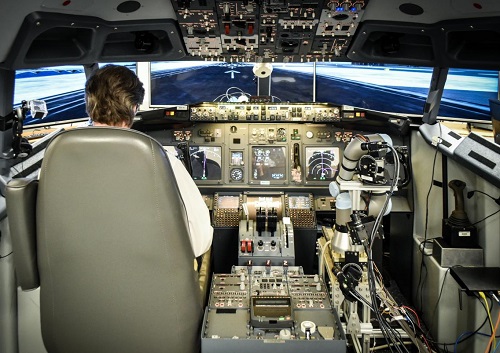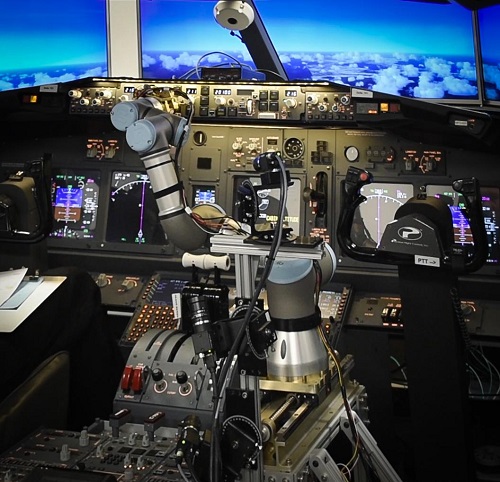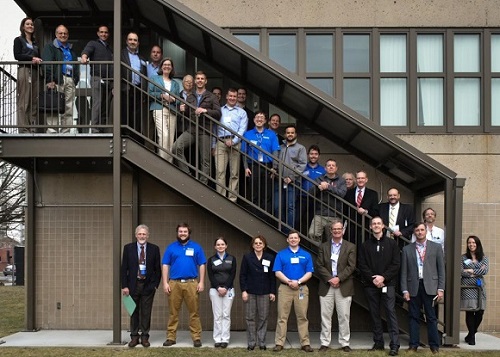Robot Co-Pilot to the Rescue

Volpe IT specialist Andrew Kendra flies Volpe’s Boeing 737-800NG simulator with ALIAS, a robot co-pilot. (Volpe photo)
Meet ALIAS, the robot co-pilot that can help fly a plane. Through machine vision, speech recognition, and robotic manipulation, ALIAS—the Aircrew Labor In-Cockpit Automation System—can not only program and control an automated flightdeck, but it can also determine whether human pilots have properly configured their aircraft for all flight phases.
ALIAS is a drop-in system designed to fit multiple aircraft and assist the pilot. It was developed by Aurora Flight Sciences under contract by the Defense Advanced Research Projects Agency (DARPA), an agency of the U.S. Department of Defense.
It takes about one month for engineers to program ALIAS to fly a new aircraft, compared to several months or even years to develop and certify upgraded avionics for older aircraft designs.
To date, Aurora has installed ALIAS components on a Diamond DA42, Cessna 208 Caravan, UH-1 Iroquois, DHC-2 Beaver, and Volpe’s Boeing 737 simulator.
Recently, Volpe IT specialists Alan Yost and Andrew Kendra, who are both pilots, modified the Volpe 737 simulator hardware and software to accommodate ALIAS and demonstrate its capabilities in realistic scenarios.

ALIAS was installed on Volpe’s Boeing 737 flight simulator in a test to see how it would react if a human pilot lost consciousness mid-flight during a simulated loss of cabin pressure event. (Volpe photo)
In a live demonstration to DARPA and stakeholders, Yost and Kendra assisted Aurora personnel in exhibiting some of ALIAS’s capabilities on Volpe’s flight simulator to show how the robot would react if a human pilot were to lose consciousness mid-flight during a simulated loss of cabin pressure event.
Kendra acted as pilot and operated the simulator and Yost (a former air traffic controller) acted as air traffic control. Kendra pretended to lose consciousness and control of the aircraft, and ALIAS successfully detected the simulated low cabin pressure warning, and then initiated and completed an emergency descent.
The demonstration took place in front of representatives from DARPA, the Air Force Research Laboratory, the U.S. Navy Naval Air System Command, and NASA, including former astronaut Joe Edwards. Joining them were Aurora Flight Sciences Vice President of Research and Development John Wissler and the Aurora team that built ALIAS.
In addition to having a Boeing 737 flight deck simulator, Volpe is also home to a custom-built driving simulator and a locomotive simulator, both of which are owned by the Federal Railroad Administration.

